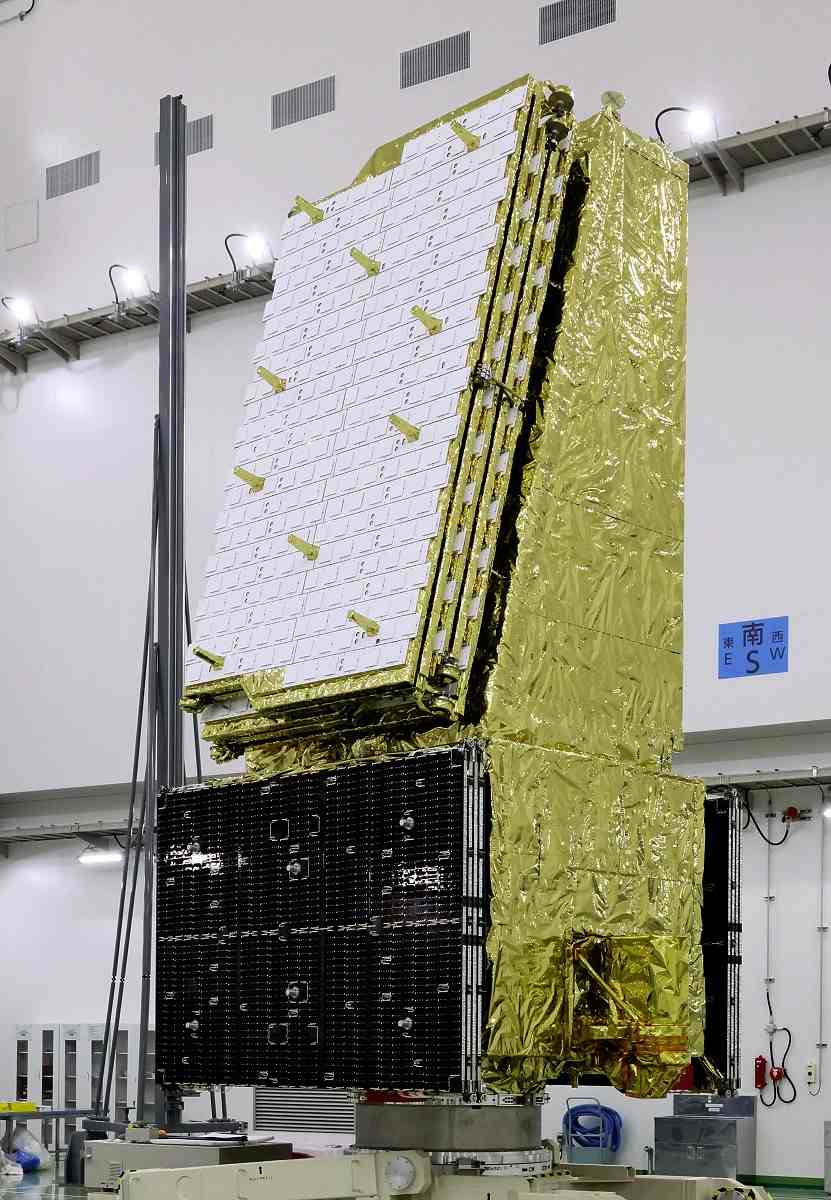New Japanese Satellite Daichi-4 Can Observe Wider Area; Scientists Can See Post-Disaster Damage, Volcanic Activity

The Daichi-4 satellite is seen at the Tanegashima Space Center in Kagoshima Prefecture.
17:24 JST, July 2, 2024
The Advanced Land Observing Satellite-4, or Daichi-4, has successfully entered orbit following the launch of the third H3 rocket on Monday.
The 3-ton satellite allows scientists to observe not only damage from natural disasters, such as earthquakes and heavy rainfall, but also tectonic and volcanic activities through its high-performance radar.
Daichi-4 sends a radar signal toward the object being observed on the Earth’s surface and observes the electric waves bounced off the object. Depending on the strength of the electric waves, it can determine the size and the external characteristics of the object.
Observation is possible even at night or in bad weather.
Daichi-4 is a successor to Daichi-2, which has been in use since 2014, longer than its envisioned lifetime. The Japan Aerospace Exploration Agency and Mitsubishi Electric Corp. spent ¥32 billion to develop Daichi-4, which has an observation range of 200 kilometers, or four times that of Daichi-2.
This means Daichi-4 can observe all of Japan in approximately two weeks at the fastest.
“It can observe the whole Kanto plain at once and the Kyushu region from east to west,” said JAXA project manager Yoshihisa Arikawa.
Daichi-2 was highly successful at swiftly determining the large-scale ground displacement following the Noto Peninsula Earthquake in January. However, the damaged area exceeded the satellite’s observation range of 50 kilometers.
“With Daichi-4, we can quickly ascertain the damage over a wide area,” said Prof. Masahiko Nagai of Yamaguchi University.
Daichi-4 was originally supposed to carry out observation tasks in tandem with the optical satellite Daichi-3, which was mounted with a high-performance camera. Daichi-3 was lost together with the first H3 vehicle launcher when the launch of the rocket failed, so Daichi-4 will make observations in cooperation with Daichi-2 for the time being.
"Science & Nature" POPULAR ARTICLE
-

Genome Study Reveals Milestone in History of Cat Domestication
-

Big Leap in Quest to Get to Bottom of Climate Ice Mystery
-

Security Camera Footage Vulnerable to Outside Access; Investigation Finds 3,000 Pieces Exposed Online
-

Paws on Parade: Nairobi’s Dogs Dazzle at ‘Pawchella’
-

Japanese Eels Escape New Regulation in Vote at CITES Meeting, Avoiding Higher Prices for Dealers and Diners
JN ACCESS RANKING
-

Keidanren Chairman Yoshinobu Tsutsui Visits Kashiwazaki-Kariwa Nuclear Power Plant; Inspects New Emergency Safety System
-

Imports of Rare Earths from China Facing Delays, May Be Caused by Deterioration of Japan-China Relations
-

University of Tokyo Professor Discusses Japanese Economic Security in Interview Ahead of Forum
-

Japan Pulls out of Vietnam Nuclear Project, Complicating Hanoi’s Power Plans
-

Govt Aims to Expand NISA Program Lineup, Abolish Age Restriction

























